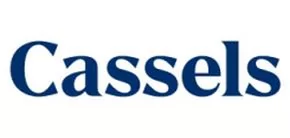- within Cannabis & Hemp topic(s)
- with Senior Company Executives, HR and Finance and Tax Executives
- in Canada
- with readers working within the Business & Consumer Services, Healthcare and Retail & Leisure industries
On April 2, 2025, President Trump, citing the US trade deficit and declining US manufacturing sector, invoked his authority under the International Emergency Economic Powers Act, 1977 to issue an executive order entitled Regulating Imports with a Reciprocal Tariff to Rectify Trade Practices that Contribute to Large and Persistent Annual United States Goods Trade Deficits. The EO is accompanied by a Fact Sheet which discussed the rationale for imposing this new set of tariffs.
Reciprocal Tariffs
The EO imposes the following tariffs:
- Effective April 5, a baseline 10% tariff on all imports into the US from all countries. Importantly, Canada and Mexico are exempted from the reciprocal tariffs.
- Effective April 9, a country specific higher tariff rather than the 10% baseline on goods imported into the US from specific countries listed in Annex I, of which Canada is not a part.
- The above-mentioned tariffs do not apply to goods listed in Annex II, including:
-
- Copper, pharmaceuticals, semiconductors, certain critical minerals, and energy and energy products;
- Worldwide aluminum and steel products that are subject to 25% tariffs previously discussed here;
- Automobile and automotive parts from all countries including Canada, that are subject to 25% tariffs effective April 3 pursuant to the Proclamation of March 26 and subsequent publication in the Federal Register on April 3;
- Lumber products, which remain subject to ongoing investigation to determine effects of their imports on national security pursuant to the Executive Order of March 1;
- Additionally, the above-mentioned tariffs do not apply to:
-
- Goods on which tariffs have previously been imposed. This includes the goods from Canada on which tariffs are in place as set out below;
- Goods imported from Russia, Belarus, Cuba, and North Korea, subject to rates in column 2 of the Harmonized Tariff Schedule of the United States ;
- The 'US content' of goods where at least 20% of the imported good has 'US content' (i.e., those parts that are wholly obtained, produced entirely, or substantially transformed in the US).
- The de-minimis exemption from duty and certain taxes will continue to be available for these products.
Canada
- As noted above, the 10% baseline does not apply to imports of goods from Canada.
- Existing tariffs against Canada as discussed here continue to apply as follows:
-
- 25% tariffs on all goods that do not qualify for USMCA preference;
- 10% tariffs on all energy goods and potash that do not qualify under USMCA.
- In the event the orders pursuant to which these tariffs imposed on Canada are terminated or suspended, all USMCA non-qualifying goods will be subject to a 12% tariff, except for energy goods and potash.
President Trump reserves the right to impose higher tariffs should any other country take retaliatory measures (by imposing duties or otherwise) or should US manufacturing capacity and output worsen.
Following a meeting with the First Ministers this morning, Prime Minister Carney announced today that Canada will introduce a matching 25% reciprocal tariff on vehicles imported from the US that do not qualify for USMCA preference, as well as on the non-Canadian content of vehicles that do qualify for USMCA preference.
The Canadian government has not yet introduced the order implementing the surtax order imposing the 25% reciprocal auto tariffs. We continue with to monitor their introduction and implementation.
The content of this article is intended to provide a general guide to the subject matter. Specialist advice should be sought about your specific circumstances.





